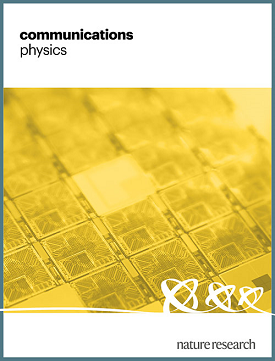Benchmarking the optimization of optical machines with the planted solutions
IF 5.8
1区 物理与天体物理
Q1 PHYSICS, MULTIDISCIPLINARY
引用次数: 0
Abstract
This research focuses on developing effective benchmarks for quadratic unconstrained binary optimization instances, crucial for evaluating the performance of Ising hardware and solvers. Currently, the field lacks accessible and reproducible models for systematically testing such systems, particularly in terms of detailed phase space characterization. Here, we introduce universal generative models based on an extension of Hebb’s rule of associative memory with asymmetric pattern weights. We conduct comprehensive calculations across different scales and dynamical equations, examining outcomes like the probabilities of reaching the ground state, planted state, spurious state, or other energy levels. Additionally, the generated problems reveal properties such as the easy-hard-easy complexity transition and complex solution cluster structures. This method offers a promising platform for analyzing and understanding the behavior of physical hardware and its simulations, contributing to future advancements in optimization technologies. The authors present a method for creating generative models that produce test instances for quadratic unconstrained binary optimization (QUBO) problems, inspired by Hebb’s rule. Their approach identifies key solution patterns and complexity transitions, providing a platform to evaluate the performance of Ising hardware and solvers efficiently.

用植入式解决方案优化光学设备的基准
这项研究的重点是为二次无约束二元优化实例开发有效的基准,这对评估伊辛硬件和求解器的性能至关重要。目前,该领域缺乏可访问、可重现的模型来系统地测试此类系统,特别是在详细的相空间特征方面。在此,我们介绍了基于非对称模式权重的联想记忆希伯规则扩展的通用生成模型。我们对不同尺度和动力学方程进行了全面计算,考察了达到基态、种植态、杂散态或其他能级的概率等结果。此外,生成的问题还揭示了易-难-易复杂性转变和复杂解簇结构等特性。这种方法为分析和理解物理硬件及其模拟的行为提供了一个前景广阔的平台,有助于未来优化技术的进步。作者介绍了一种创建生成模型的方法,该方法受 Hebb 规则的启发,可生成二次无约束二元优化(QUBO)问题的测试实例。他们的方法能识别关键的求解模式和复杂性转换,为有效评估伊辛硬件和求解器的性能提供了一个平台。
本文章由计算机程序翻译,如有差异,请以英文原文为准。
求助全文
约1分钟内获得全文
求助全文
来源期刊

Communications Physics
Physics and Astronomy-General Physics and Astronomy
CiteScore
8.40
自引率
3.60%
发文量
276
审稿时长
13 weeks
期刊介绍:
Communications Physics is an open access journal from Nature Research publishing high-quality research, reviews and commentary in all areas of the physical sciences. Research papers published by the journal represent significant advances bringing new insight to a specialized area of research in physics. We also aim to provide a community forum for issues of importance to all physicists, regardless of sub-discipline.
The scope of the journal covers all areas of experimental, applied, fundamental, and interdisciplinary physical sciences. Primary research published in Communications Physics includes novel experimental results, new techniques or computational methods that may influence the work of others in the sub-discipline. We also consider submissions from adjacent research fields where the central advance of the study is of interest to physicists, for example material sciences, physical chemistry and technologies.
 求助内容:
求助内容: 应助结果提醒方式:
应助结果提醒方式:


